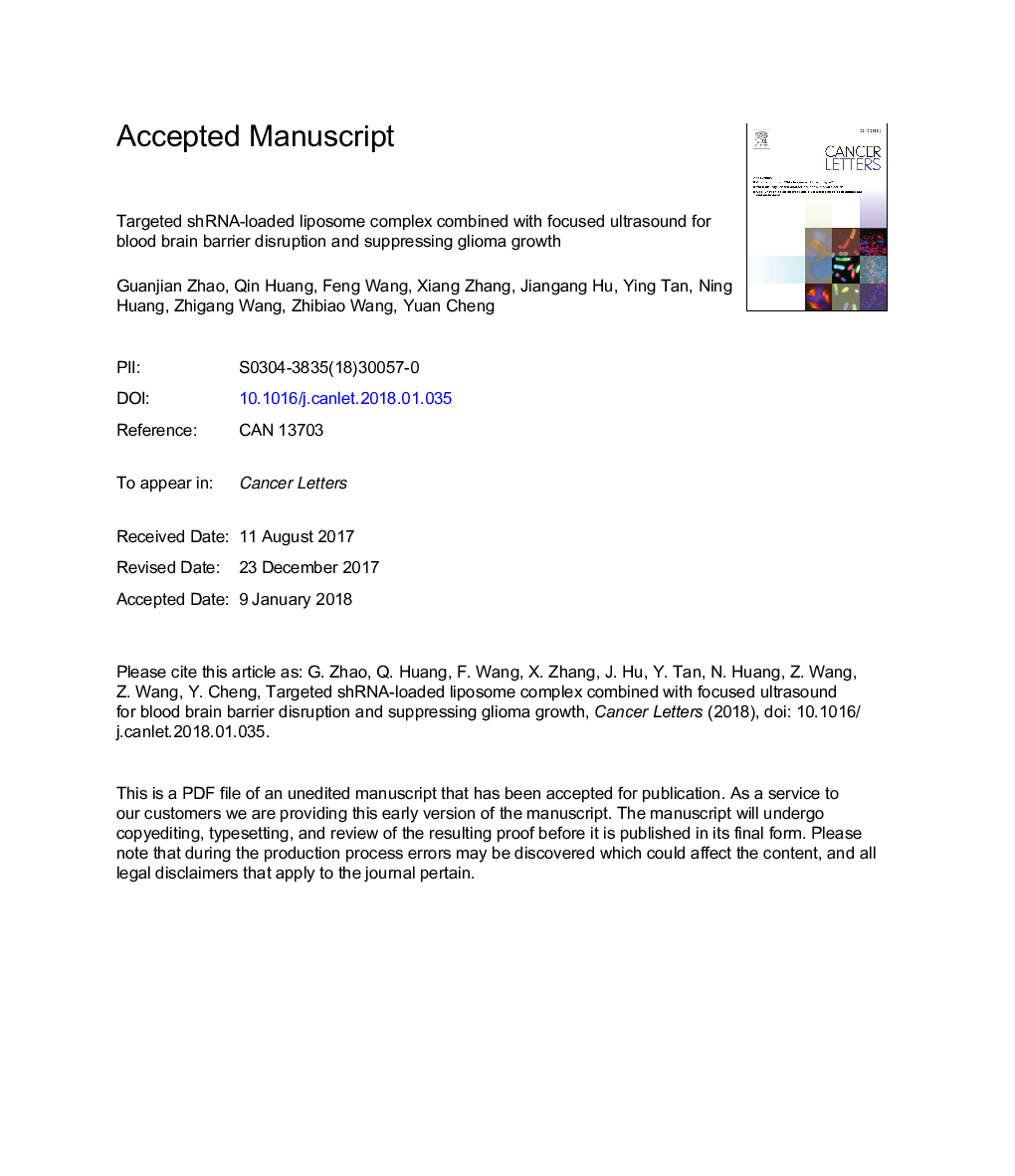| Article ID | Journal | Published Year | Pages | File Type |
|---|---|---|---|---|
| 8434800 | Cancer Letters | 2018 | 47 Pages |
Abstract
Our previous studies have demonstrated that focused ultrasound (FUS) combined with DNA-loaded microbubbles (MBs) can induce noninvasive, reversible, local disruption of the blood brain barrier (BBB) and enable targeted exogenous gene transfer into the central nervous system. However, due to low gene loading or the absence of positive targeting, to date, there has been no therapeutic effect of MBs combined with FUS in tumor treatment. In the current study, we adopted a phospholipid complex that exhibited sufficient gene loading and peptide-mediated targeting to delay glioma growth. First, we bound MBs to shBirc5-lipo-NGR, which performed the dual function of tumor cell targeting and effective gene loading. Next, we demonstrated that FUS-aided MB-shBirc5-lipo-NGR exhibited a higher transfection efficiency compared with the control group. Finally, we evaluated the silencing effect of shBirc5 using an apoptosis assay, real time-polymerase chain reaction (PCR), western blotting (WB) in vitro and a volume measurement survival analysis in vivo. The experimental group exhibited a significant therapeutic effect, while the FUS-only, MB-shBirc5-lipo-NGR-only and FUS-aided MB-shControl-lipo-NGR groups displayed no changes in tumor growth or survival time (Pâ¯<â¯.01). Consequently, our study indicated that MB-shBirc5-lipo-NGR combined with FUS is a promising new RNA interference technique for the treatment of glioma.
Keywords
Related Topics
Life Sciences
Biochemistry, Genetics and Molecular Biology
Cancer Research
Authors
Guanjian Zhao, Qin Huang, Feng Wang, Xiang Zhang, Jiangang Hu, Ying Tan, Ning Huang, Zhigang Wang, Zhibiao Wang, Yuan Cheng,
